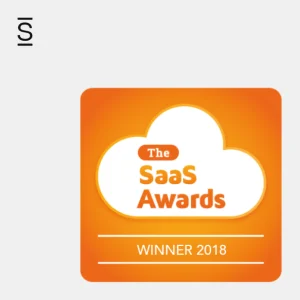Intranets are designed to support employees in their daily work, helping them to complete tasks and find key information, like a digital workplace. One of the ways intranets achieve this is by acting as a central gateway, or ‘front door’ to all the different applications and systems used by employees within the organization. The intranet becomes more of a digital workplace, an access point for all the digital channels in use.
Advantages of using the intranet as a digital workplace include:
- Employees can find different systems more easily and quickly
- Context can be given about the best use of an application through user guides, videos and forums
- Employees like being in an integrated and pleasant digital environment that helps to promote the culture of their organization
Overall this is more efficient and engaging, and much less frustrating for employees, who don’t want to go to multiple places for the essential things they need.
Certain approaches can make your intranet a more effective gateway to the digital workplace. Here are seven tips to consider when linking to other apps or digital channels from your intranet.
1. Make apps easy to access
Links to applications should be easy to find, and need to be placed in a prominent section of the intranet, on the homepage or in the navigation for example. A current trend is for users to be able to link to key systems from the homepage, with each application represented by a different icon, in a similar experience to the way users might access apps on their smartphone.
2. Target to different groups and allow individuals to personalize
Within most organizations there are some applications that the majority of the users will want to access, such as booking travel and HR systems, but there may be more obscure systems only used by certain roles or at specific times of the year.
If your intranet allows it, target the list of links to apps available based on a person’s role or location, making sure you include all the major systems in use. In addition, allow individuals to customize the list so that each person can add extra links to the systems they use on a daily basis. This means the digital workplace is relevant to everybody.
3. Keep up with the changes
Intranets are forever changing, reflecting the volatility of organizations and the business environment. Your digital workplace needs to keep apace of the changes, so make sure there is a process to add links to new systems and channels that come into operation.
4. Give your systems context
When linking to an application, make sure you give it some context by explaining what the system does, including any instructions or help videos and who to contact for more information. For example, you might create a landing page dedicated to using your travel booking system. If you have a support community for an application, make sure this is integrated with or easily accessible from the page.
5. Label as tasks, not as systems
It’s amazing how organizations use an array of Three Letter Acronyms (TLAs) and refer to systems and applications by an array of complicated names. This can be a source of confusion for both new and experienced employees who just want to find and access the time booking system rather than something called “TBS” or a product named “TickTock”.
Help out your employees by labeling links with the clear names of tasks and what systems do. “Book your travel,” or “Request Annual Leave” may be a better way to describe systems in your navigation or on your homepage rather than system names.
6. Underpin the digital workplace with single sign-on
One of the most important aspects for successfully using the intranet as the gateway to all the applications within your digital workplace is using single sign-on. This means that users do not have to enter their username and password to get into all the different areas they need to access. This removes a significant barrier to adoption and a major source of frustration for users.
Single sign-on isn’t always possible for all applications due to various technical and even security issues, but if you want to extend your intranet as a gateway to the digital workplace, speak to your IT folks about what can be achieved.
7. Consider the mobile device experience
Many employees want to be able to access the intranet from their mobile devices, and increasingly many intranets are being built with responsive design. This means the intranet is optimized for viewing on any device with the constituent parts of the intranet page adapting to the size of the screen.
This can have challenges when adding links to other applications, as some of the systems being linked to might not be optimized for smartphones and tablets. This can result in a disjointed user experience when an employee clicks on a link using their smartphone. In this case you may need to warn users or avoid linking to applications where the mobile experience is poor.
Deliver the digital workplace
Overall your employees deserve a great digital workplace. Making your intranet the central component will help them find the applications they need more easily and provide a more seamless digital experience. Using the tips in this post can help you make that experience more effective. Good luck on the start of your digital workplace journey!














